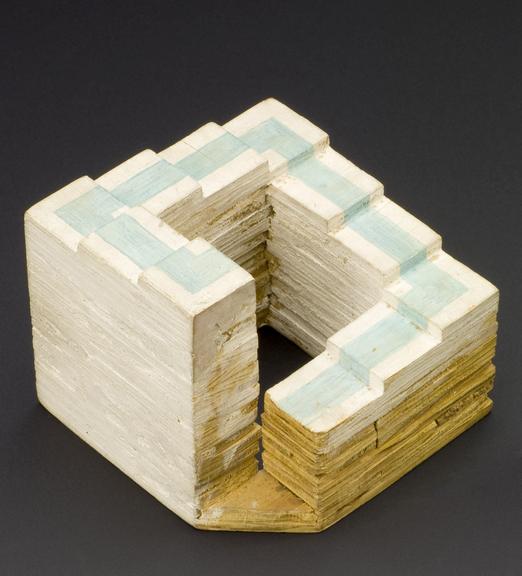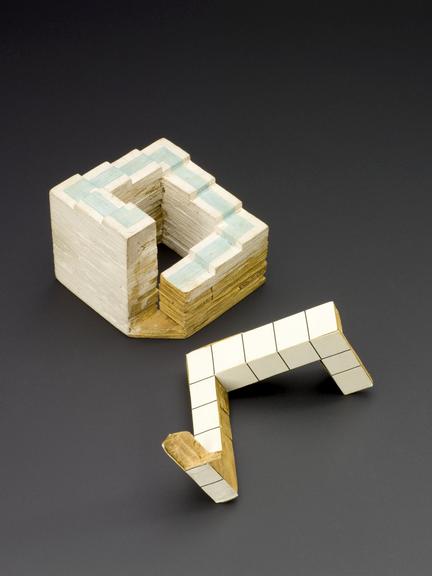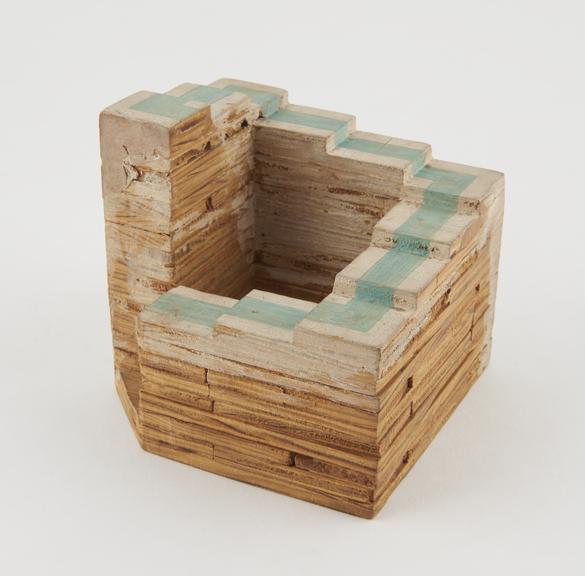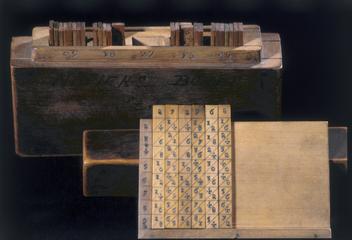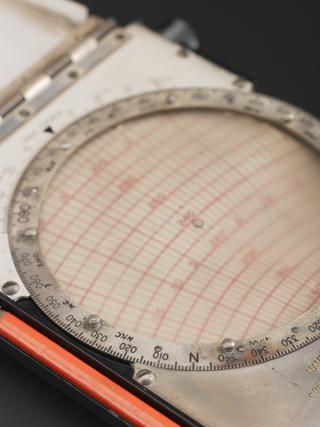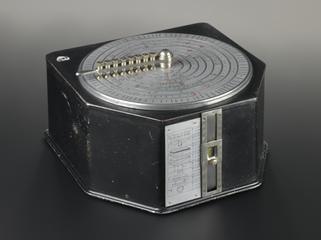First model of the 'Impossible triangle'
First model of the 'impossible triangle', designed and constructed by Roger Penrose and Lionel Sharples Penrose FRS, England, 1955-1959
More
First model of the 'impossible triangle' one of a series of 'impossible figures' designed and constructed by English geneticist Lionel Penrose FRS (1898-1972) in the 1950s. Penrose's discovery of the 'impossible figure' laid the foundation for the scientific study of illusions and investigations into the psychology of human perception. The Dutch artist M C Escher (1898-1972) was heavily influenced by Penrose's discovery, and incorporated an 'impossible triangle' into his well known 'Waterfall' lithograph.
- Measurements:
-
overall: Ht 101 mm x W 105 mm, 0.05kg
- Materials:
- birch plywood , paper (fibre product) and adhesive
- Object Number:
- 1982-899/1
- type:
- model - representation and optical puzzle
- Image ©
- The Board of Trustees of the Science Museum



